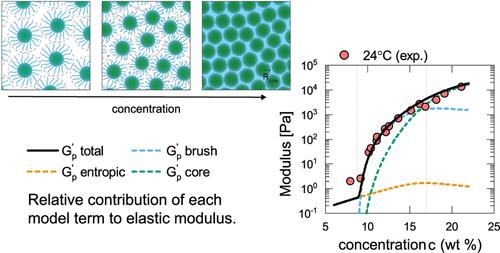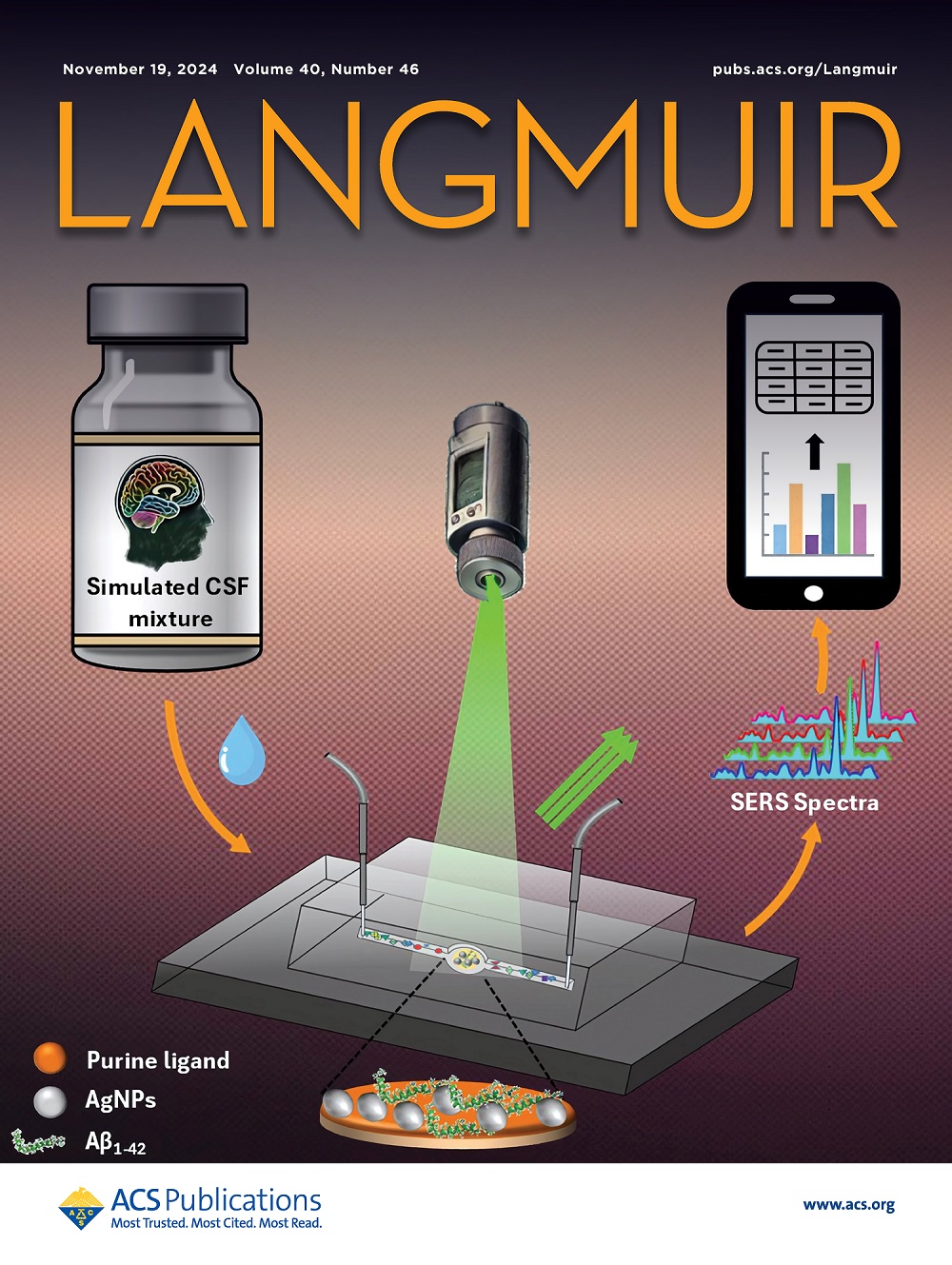A Free Energy Model for the Plateau Shear Modulus in Thermosensitive Microgel Suspensions
IF 3.7
2区 化学
Q2 CHEMISTRY, MULTIDISCIPLINARY
引用次数: 0
Abstract
Polymer microgels exhibit intriguing macroscopic flow properties arising from their unique microscopic structure. Microgel colloids usually comprise a cross-linked polymer network with a radially decaying density profile, resulting in a dense core surrounded by a fuzzy corona. Notably, microgels synthesized from poly(N-isopropylacrylamide) (PNIPAM) are thermoresponsive and capable of adjusting their size and density profile based on temperature. Above the lower critical solution temperature ( °C), the microgel’s polymer network collapses, expulsing water through a reversible process. Conversely, below 33 °C, the microgel’s network swells, becoming highly compressible and allowing overpacking to effective volume fractions exceeding one. Under conditions of dense packing, microgels undergo deformation in distinct stages: corona compression and faceting, interpenetration, and finally, isotropic compression. Each stage exhibits a characteristic signature in the dense microgel suspensions’ yield stress and elastic modulus. Here, we introduce a model for the linear elastic shear modulus by minimizing a quasi-equilibrium free energy, encompassing all relevant energetic contributions. We validate our model by comparing its predictions to experimental results from oscillatory shear rheology tests on microgel suspensions at different densities and temperatures. Our findings demonstrate that combining macroscopic rheological measurements with the model allows for temperature-dependent characterization of polymer interaction parameters.

求助全文
约1分钟内获得全文
求助全文
来源期刊

Langmuir
化学-材料科学:综合
CiteScore
6.50
自引率
10.30%
发文量
1464
审稿时长
2.1 months
期刊介绍:
Langmuir is an interdisciplinary journal publishing articles in the following subject categories:
Colloids: surfactants and self-assembly, dispersions, emulsions, foams
Interfaces: adsorption, reactions, films, forces
Biological Interfaces: biocolloids, biomolecular and biomimetic materials
Materials: nano- and mesostructured materials, polymers, gels, liquid crystals
Electrochemistry: interfacial charge transfer, charge transport, electrocatalysis, electrokinetic phenomena, bioelectrochemistry
Devices and Applications: sensors, fluidics, patterning, catalysis, photonic crystals
However, when high-impact, original work is submitted that does not fit within the above categories, decisions to accept or decline such papers will be based on one criteria: What Would Irving Do?
Langmuir ranks #2 in citations out of 136 journals in the category of Physical Chemistry with 113,157 total citations. The journal received an Impact Factor of 4.384*.
This journal is also indexed in the categories of Materials Science (ranked #1) and Multidisciplinary Chemistry (ranked #5).
 求助内容:
求助内容: 应助结果提醒方式:
应助结果提醒方式:


